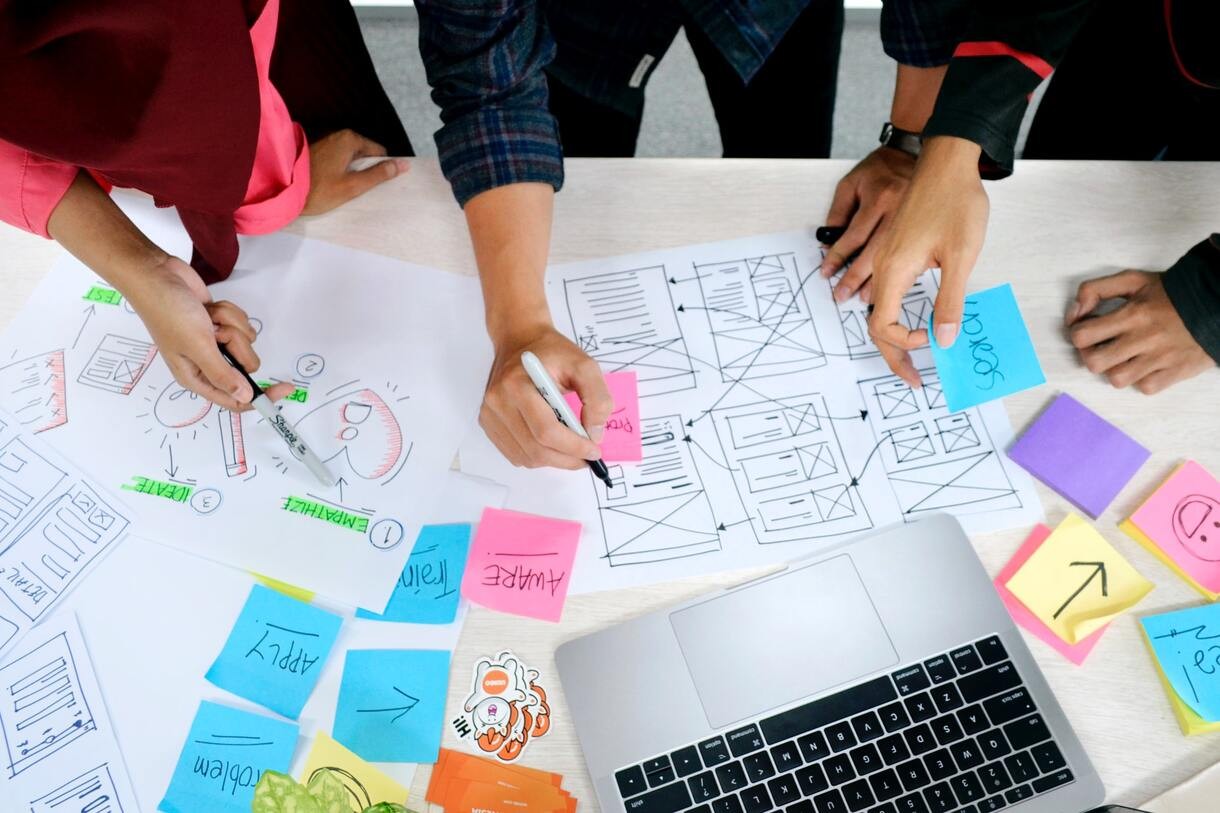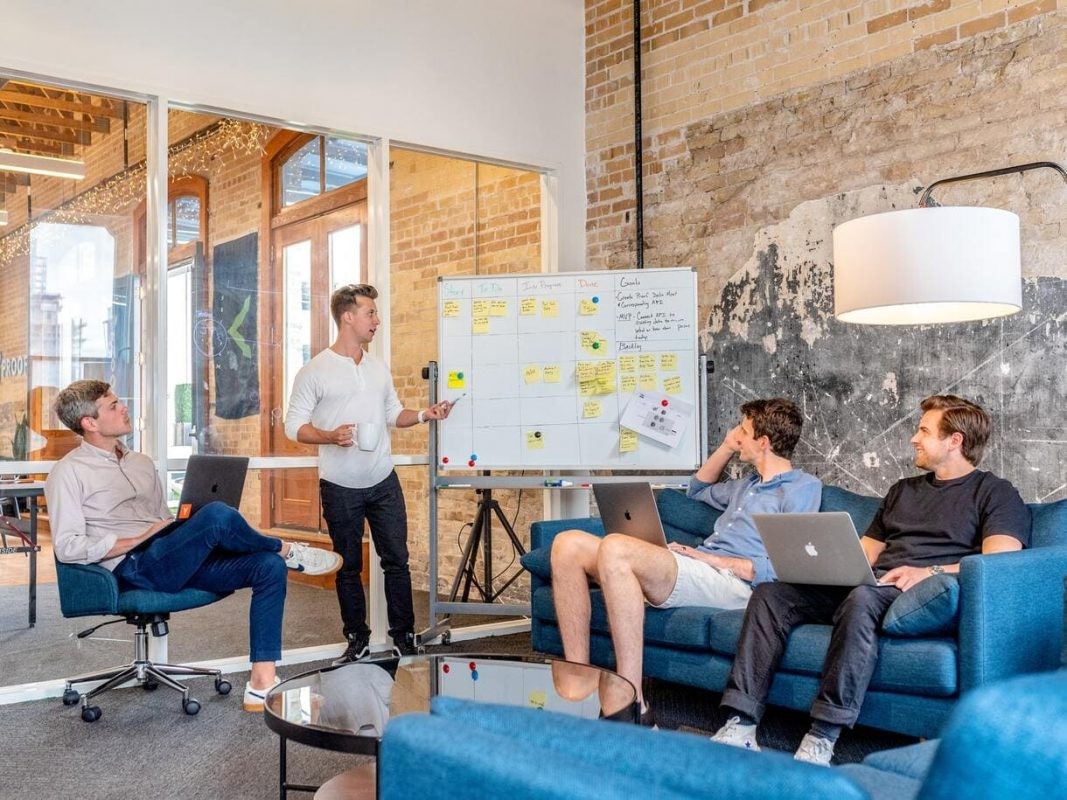
January 01, 2024
A Roadmap to developing a top-notch business application in 2024
Building a high-quality application that scales with your business and does not cost an arm and a leg can be a challenge. Too often, businesses spend a fortune on software development only to end up with a buggy product that doesn't bring their business the expected ROI. To be successful, business app development must balance functionality and customization with the time and money invested in it. This article is a roadmap for how to create a successful app.
Types of business applications
A business application is software that helps optimize and automate workflows, processes, communication, and services. The goal of such an app is to enhance the productivity and profitability of your business. These apps can serve to improve external and internal operations.
Apps for external operations focus on relationships with your business clients and partners (B2B) and customers (B2C). Examples include CRM systems, payment services, procurement automation, e-Commerce marketplaces, loyalty apps, crowdfunding platforms, etc.
Apps for internal operations the company uses to enable its core functionality. They include all enterprise resource planning (ERP) systems, HR systems, etc.
These apps can be web-based, mobile, or both.
Ready-made vs. custom business apps development: Which to choose?
The answer will depend on your business needs, plans, and budget. So let’s zoom in on these two completely different approaches to software development and get more clarity on how to make an app successful.
Off-the-shelf business apps
Off-the-shelf software is out-of-box, ready-made software. These apps are available to everybody for a license fee, and the process depends on the complexity and number of features.
Is the off-the-shelf approach a good fit in your case? Let's look at the pros and cons to help you decide.
Pros:
- Fast time to market
- Cost savings
- Foundation to build on (for open-source solutions)
Cons:
- Not tailored to your business needs
- Security risks
- No scalability
- No control
- Progressing costs
Custom business apps
Custom applications are tailor-made solutions built from the ground up to meet your business needs. Custom development is the best choice for startups that need successful mobile apps with complex functionality and strict security requirements.
Pros:
- Customization
- Scalability
- Full control
- Competitive edge
- Robust security
Cons:
- High costs
- Longer time to market
In a nutshell, off-the-shelf development is like renting an apartment, while custom development is like buying your own place.
Most businesses rightfully opt for a custom design, especially if the application is meant to give them a competitive edge.
Unfortunately, regardless of the type and industry, 99.5% of consumer apps fail to succeed due to missteps in the custom development process. Let’s look at what makes an app successful and what common mistakes you can make in the dev process.
Four common mistakes in business app development

Businesses make numerous mistakes that can jeopardize their solution quality and viability. According to our experience, here are the most dangerous ones.
Mistake #1. Neglecting the product discovery phase
Product discovery is a key phase in product development that many businesses do poorly. Done well, product discovery allows you to uncover important insights and in-depth answers to the following questions:
- What do you know about our target audience?
- What business problems does our app need to solve?
- Which assumptions need validating?
- Who is our competition, and how can we outcompete them?
- What technology stack would be the best fit for your solution?
- What solution architecture should we create?
Leaving these topics unanswered, or holding wrong assumptions, may lead to problems with your future apps’ performance and profitability, undermining your app development roadmap.
Mistake #2: Neglecting investing in UX/UI design
Small changes to a product's underlying technology are often mistakenly given a higher priority than refining the user experience. Unless your technology is utterly revolutionary and disruptive, a polished UX/UI is an absolute must-have to attract users and customers.
User experience is becoming increasingly more important in all industries. it is the way to gain a competitive advantage and communicate your product's value and brand to the customer. The market is oversaturated with offers, and a stellar user experience is your way to stand out with successful apps.
It's no different for apps that optimize a business's internal processes, where the users are the employees or partners. If your employees can't find their way around the interface and functionality, their work efficiency will suffer, hurting the business profits.
Whether you are creating a customer-facing app or trying to optimize your internal processes, poor UX/UI design will always hurt your app's profitability.
Mistake #3: Choosing the wrong software development vendor
Choosing the wrong development partner can turn into a catastrophe for your project. This is especially true if you seek to outsource full-cycle development because the vendor will also have a role in shaping your vision.
Take a look at these five aspects when hunting for a perfect candidate:
- Corporate Culture. Find out whether you share the same values, commitments, and priorities.
- Communication Policy. Communication methods, tools, and procedures are critical to staying in control. Find out whether the communication policy fits your expectations.
- Technical Competence. Ensure that the developer team's competence level is up to the task. Familiarize yourself with success stories, technology stacks, quality standards, and certifications.
- Industry Expertise. This is very important. Without sufficient industry expertise, all other virtues cannot mitigate the risk. Ask direct questions, and interview only professional candidates.
- Maturity of Processes. Your vendor must have effective and well-established processes in place. This includes project management, risk management, decision making, issue resolving, information security management, etc.
The good news is that you can easily avoid the mistakes above by investing in expert product research, business analysis, testing, development, and design.
Below, we outline a step-by-step process to build high-quality and predictably successful business applications, clarifying what makes a successful app.
How to plan a successful business app development

If you want to develop a well-functioning business application that brings you the expected return on investment, you must follow a tried-and-true process. Skipping even one step will inevitably jeopardize the result. At Artkai, we've been following and refining this process for years to help our clients build successful business apps. Here is how it looks.
Research and Plan
Research and planning are the most important steps of the project. You’ll build the foundation for your future app, minimize risks, uncover hidden opportunities, and direct the whole project.
Outline your business and functional objectives
This part involves meeting with stakeholders and product experts and interviewing your target users. The goal here is to gather information about your business needs and outline the outcomes the application needs to achieve.
This step involves in-depth competitor, market, and user research, and can result in the following detailed findings:
- Your target audience and their needs
- Your business objectives
- The apps functionality
- Monetization strategy
Decide on the technology stack and solutions architecture
Picking the right technology for your future app is essential, as it directly affects how well-performing, scalable, and secure your business app will be. The combination of the technologies will depend on your specific case and solution functionality.
For example, when we were developing a bill management system with high security and fault tolerance requirements in the energy sector, our technology stack looked like this:
- TypeScript, Vue.js, Vuex, Nuxt.js
- Java / Spring, Node.js / Express.js
- SAP, MySQL, REST API, Swagger, WebSockets / Socket.io, GraphQL, Apache Ignite, Maven
For another project – an IoT platform for building
monitoring and control, we chose the following tech stack:
- TypeScript, React, Redux, Next.js
- Node.js / Nest.js
- Amazon AWS, K8S, PostgreSQL, REST API, Swagger, WebSockets / Socket.io, GraphQL, Microservices
Make sure to pick the right combination of technologies that best serves your business goals.
Come up with a project backlog and app roadmap
Project backlog is the backbone of your project that outlines all its future aspects. In the final stage of planning, you’ll prepare:
- The product backlog with the list of features, Roles, Epics, and Components/user stories
- Project timeline with development stages, team composition & allocation, and cost breakdown
- The project's assumptions and risks
After all these things are documented, you are ready to begin designing and developing your business app.
Design and develop
After your idea has been shaped in numbers and features, it’s time to start with design and development. However, this process can take slightly different trajectories for startups and mature businesses.
For startups with limited resources who are raising funds for product development, the process usually starts with testing their idea. The goal here is to test the water and to create a minimum viable product (MVP) to attract investors.
Here is how the process of idea validation and development looks for startups:
- Proof of Concept (PoC). PoC is a process of testing your apps’ concept. It can include validating if there’s a demand for your idea, or testing the future functionality. To test the idea, you can create a landing page or launch an ad campaign on Facebook or Google ads for your idea. To test the future functionality, you can simulate it using a design prototype to see how customers are using it.
- Prototyping. Prototyping entails designing a basic version of your interface to let the users try out the workflow and collect feedback. It can include low-fidelity (pen-and-paper) drawings and high-fidelity (detailed digital) prototypes that showcase the interface and features of your product. Prototyping is a critical step before you start designing and developing the product and always requires UX/UI design expertise.
You can also create prototypes that reflect the desired functionality or flows to prove that the idea and solution can work. A functional prototype can mix different technologies and often includes the main strokes of the future functionality. It helps to test the key features before implementing them, which saves time and money in the future.
- Creating an MVP. MVP is an operational “preview” of the product demonstrating the minimum set of the most functional features. Rolling out this minimum version of the product can take only a few months and helps to achieve a few goals.
First, it collects feedback from the maximum number of early adopters to understand whether the product is viable and what can be improved. Second, MVP is an inexpensive way to present your product to potential investors and raise funds for further development.
Unlike POC or prototype, MVP is the solution most similar to the end product. It provides a user interface and minimum functionality and can be already used within the market.
By following this process many of our startup clients won investor funding.
The process can look slightly different for more mature businesses that don’t need investors to fund their development. After the initial research and planning, we jump right into developing an MVP to collect feedback for further iterations and proceed to the final post-MVP stages.
- Post-MVP iterations and scaling. The post-MVP stage is a process of improving and scaling the product after its release. This process can last for years and include things like fixing bugs, honing the existing functionality, adding new features, perfecting UX/UI design, ongoing support, and more.
Getting these main development stages right helps to minimize risks, avoid common pitfalls, ensure the ROI of the future product, and increase the chances that the development process will go without a hitch.
Wrapping up
Developing a high-performing business application that meets your ROI is a complex task. You need to do thorough research, be able to foresee and manage risks, pick the right technology stack to scale your app, create a rigorous project roadmap, and assign an experienced team knowing how to make a successful app.
If you lack in-house expertise, be sure to find a development partner who is experienced in implementing a solution that is similar to yours. At Artkai, we’ve helped over 80 companies to successfully plan, build, and scale their business applications across various industries. We will be happy to give you a free consultation about your case!
Clients and Results
Schedule your free consultation
Don't miss this opportunity to explore the best path for your product. We are ready to delve into the specifics of your project, providing you with expert insights and optimal solutions.
Book your free sessionWHAT TO KNOW
Questions you may ask
Read More
Explore articles from Artkai - we have lots of stories to tell
Join us to do the best work of your life
Together we advance the human experience through design.